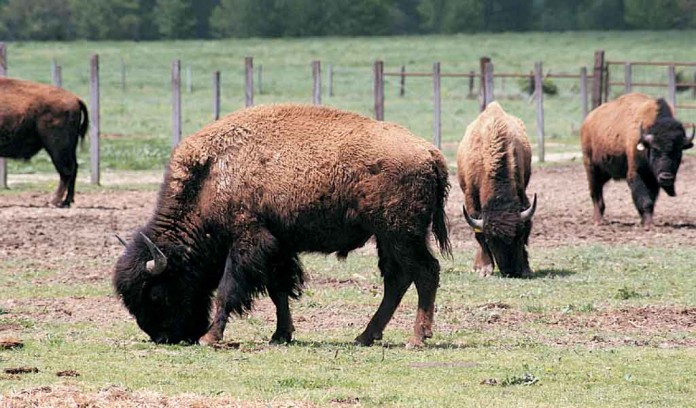Although the enormous, hairy mammals that roam the North American landscape are often referred to as buffalos, they are, scientifically, of the genus Bison, of the species bison and the subspecies bison. They are not buffalo at all.
The origin of the naming mixup can be traced back to the early 1600s when French fur trappers working in the United States called bison “bœuf.” The term came from what the French knew as true buffalo, which were species living in Africa and Asia.
Both bison and buffalo are in the Bovidae family; however, the terms are not interchangeable and there are obvious differences between the animals.
Location
The first major difference between buffalo and bison is location.
The two main species of buffalo are the Cape buffalo and the water buffalo, which can be found in Africa and Asia, respectively.
The two main species of Bison are the American Bison, which as its name suggests can be found in North America, and the European Bison, which is mainly found in Poland.
Depending on which part of the world you’re in, it should be easy to determine whether you’re looking at a buffalo or bison in the wild.
Physique
Although buffalo and bison have a lot of similarities, being very large, hooved herbivores, they also have some distinct differences.
Bison measure up to 12.5 feet from head to rump and 5-6 feet tall and weigh as much as 2,200 pounds. The Cape buffalo grows to up to 11 feet long and 5 feet tall and weighs around 2,000 pounds. The water buffalo grows up to 9 feet long and 6 feet tall and can weigh as much as 2,650 pounds.
Despite some size differences, the most distinguishing physical characteristic that sets bison apart is a large shoulder hump of muscle and a massive head that makes their hindquarters appear smaller in proportion. Both Cape buffalo and water buffalo have more proportional heads and shoulders and an overall more symmetrical appearance. The bison’s hump allows its head to function as a plow in the snow, sweeping away drifts to graze in the winter.
Other characteristics
In coordination with their physique, bison are equipped for harsh winters with thick shaggy coats and beards that keep them warm. They shed these coats in the summer months when they don’t need them. Living in warmer climates, buffalo have thinner coats.
While bison have the larger heads and shoulders and thicker fur, buffalo have more substantial horns. Both male and female Cape buffalo have horns that have a very defined arc and can grow over 3 feet across in males. Water buffalo have the largest horns that can reach up to a 6-foot span in both males and females. Bison horns of both males and females average around two feet.










